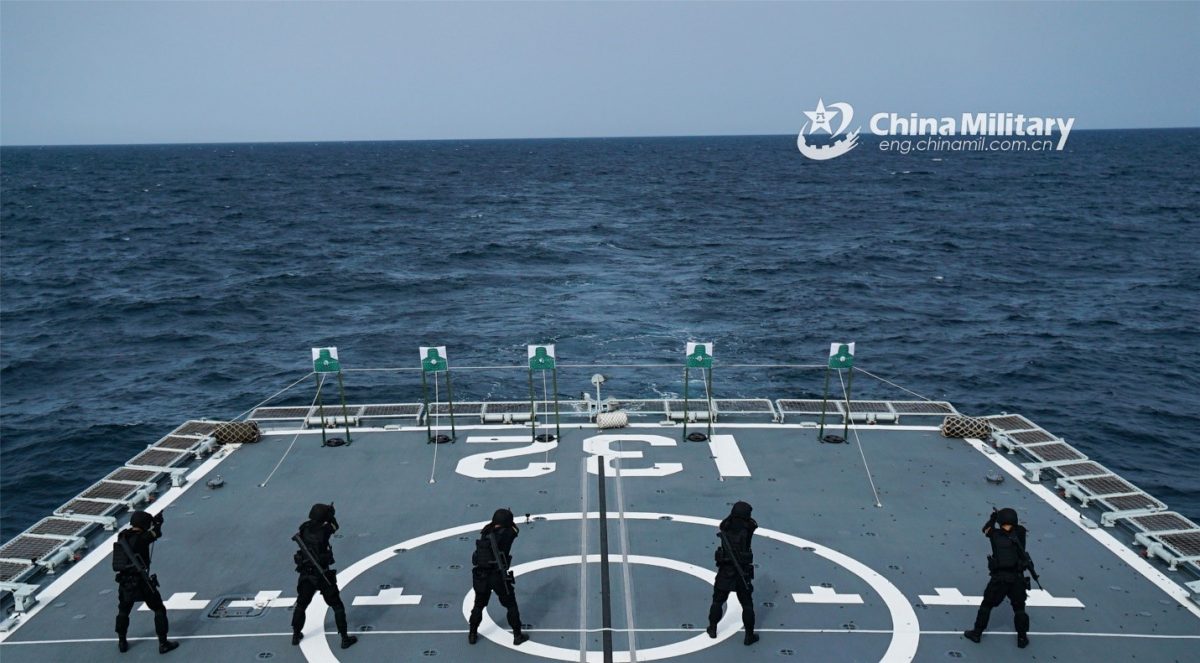There has been substantial disappointment that the U.S. Navy has not been given the funds to keep pace with the dramatic increase in size and sophistication from China’s maritime force.
In a recent document released by the Pentagon, Admiral Gilday, the U.S. Navy’s Chief of Naval Operations, outlined both the need for an adequate maritime force and the impact of American naval supremacy on the world economy. He stressed that “America has always been a maritime nation. The seas are the lifeblood of our economy, our national security, and our way of life. After World War II, America and its allies ushered in an era of great power peace and shared prosperity around the globe, establishing an international rules-based order. As a result, global trade fueled economic growth and raised standards of living across the nation. The benefits of this prosperity spread around the world: child mortality declined, life expectancy lengthened, poverty plummeted, and literacy skyrocketed. This progress and prosperity did not happen by accident. American sea power, combined with the dedication of our allies and partners, guaranteed freedom of navigation, maintained peace, and fostered a rules-based order grounded in fairness for all.”
The peace and prosperity Admiral Gilday described is beginning to unravel. He is concerned that for the first time in a generation, America faces strategic competitors who care little for the peace and prosperity that has benefited the globe thanks to America’s oversight of the oceans.
According to Gilday, “The People’s Republic of China is building all-domain military capabilities to challenge the United States. Its aggressive behavior is threatening U.S. interests, undermining alliances and partnerships, and undercutting the rules-based system. Russia invaded Ukraine, shattering the post-Cold War peace in Europe and creating new security challenges on that continent and beyond. Meanwhile, the world is entering a new age of warfare, one in which the integration of technology, concepts, partners, and systems—more than fleet size alone—will determine victory in conflict.”
While there has been little enthusiasm from the current White House to do so, experts agree with the Admiral’s warning that maintaining the world’s best Navy is an investment in the security and prosperity of the United States, as well as the stability of our world…This is a critical decade. As global challengers rise to threaten U.S. interests, America must maintain maritime dominance.”
The nature of the growing challenge is clear, and outlined by Admiral Gilday:
Today, our Navy operates in a battlespace that is quickly growing in lethality and complexity. We face many challenges across the globe, but they largely stem from three significant trends. It includes the erosion of credible military deterrence, particularly due to China’s rapidly increasing military capabilities, increasingly aggressive Chinese and Russian behavior that undermines the international rules-based order, and the accelerating pace of technological change and the expanding impact of the information environment.
The growth of the threat at sea has been breathtaking. Gilday reports that over the past three decades, the PRC aggressively leveraged its economic power to grow and modernize its military. China tripled the size of its Navy, expanded its strategic nuclear capacity and capability, advanced its cyber and space capabilities, and constructed a system of sophisticated sensors and long-range precision weapons to intimidate neighbors, challenge free and open access to the seas, and hold U.S. naval forces at risk. These investments in offensive warfighting systems—across all domains—are aimed at the heart of America’s maritime power. China designs its force for one purpose: to reshape the security environment to its advantage by denying the United States military access to the western Pacific and beyond.
Under the cover of its growing military capabilities, China is conducting a variety of incremental, malign activities, carefully calculated to take place in the gray zone—below the threshold of triggering armed conflict. Using a multi-layered fleet of naval ships, maritime militia and coast guard vessels, China is undermining international norms by staking illegal maritime claims, militarizing geographic features in the South and East China Seas, and attempting to intimidate its neighbors out of their offshore resources. This aggressive behavior threatens U.S. interests and destabilizes the rules-based system.
Photo: Naval special operations soldiers assigned to the 41st Chinese naval escort taskforce conduct live-firing training on the guided missile destroyer Suzhou (Hull No. 132) on July 15, 2022. (eng.chinamil.com.cn/Photo by Xiang Liming)
